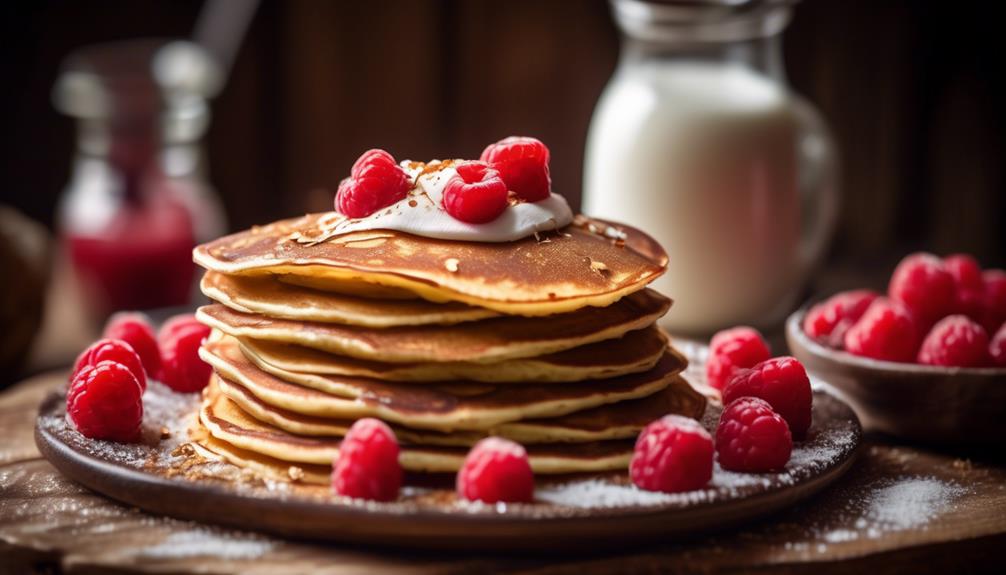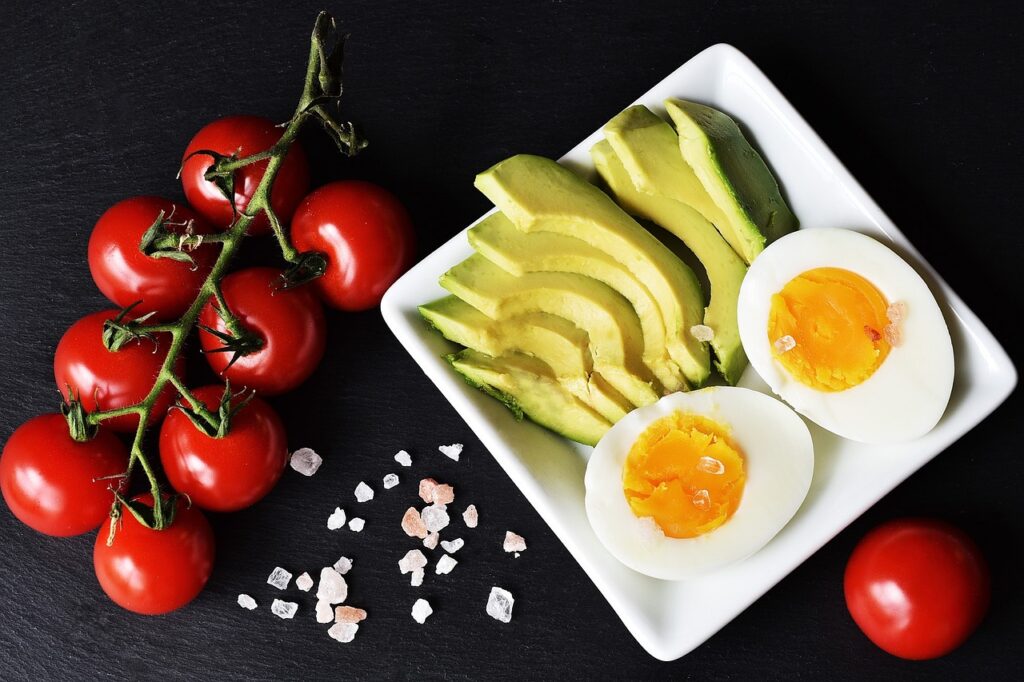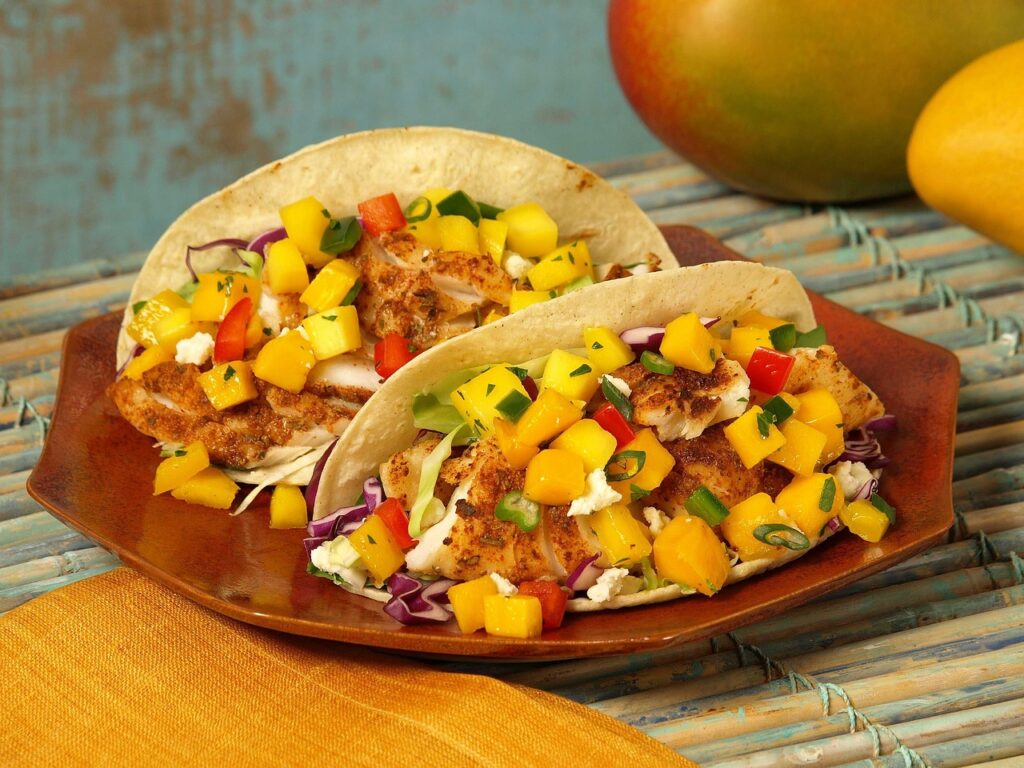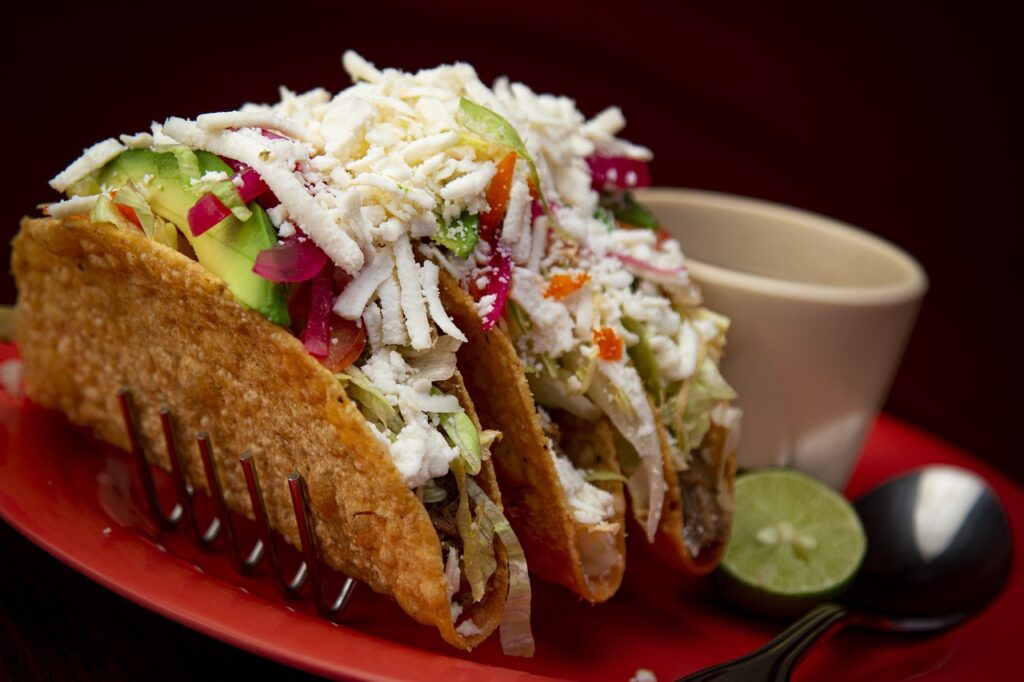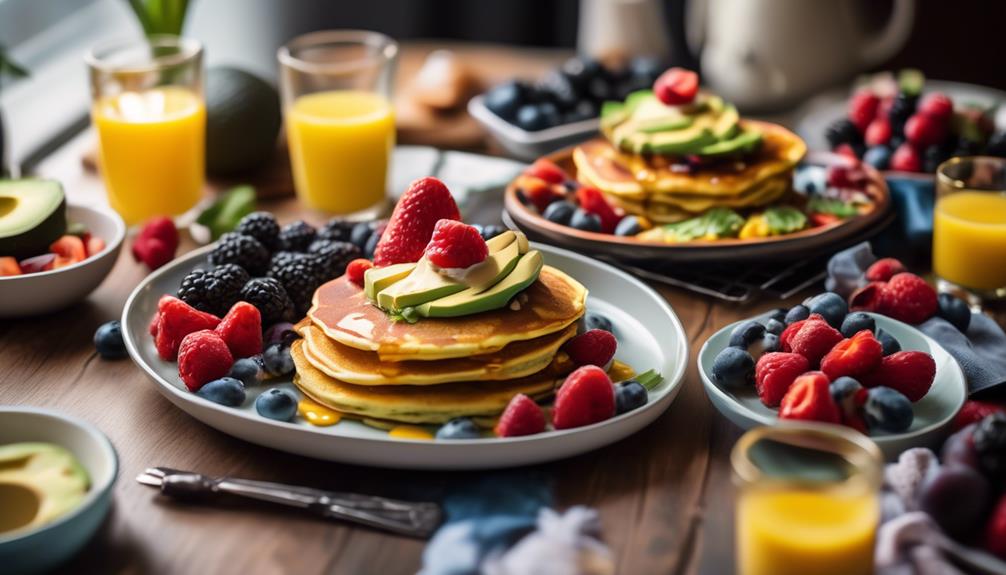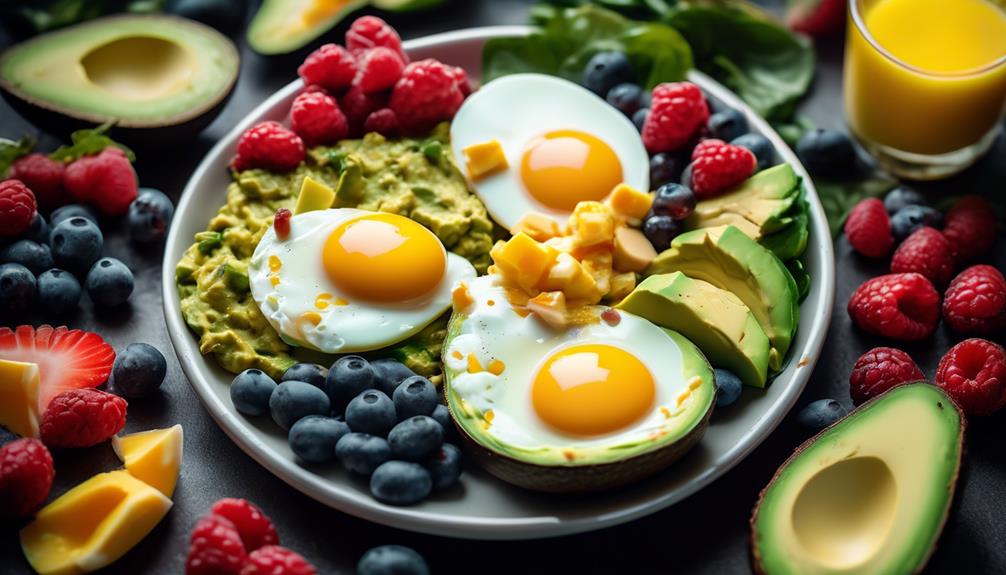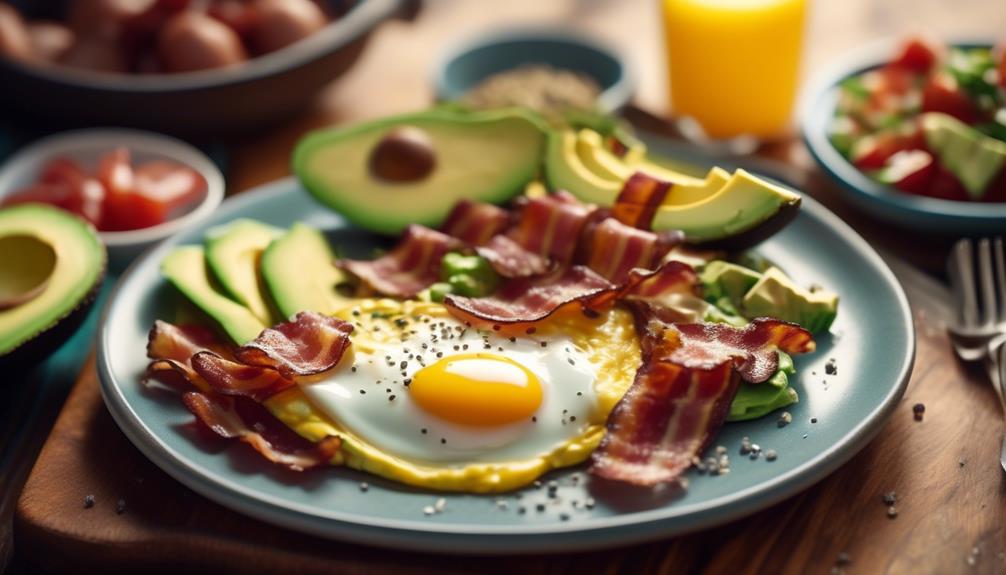Looking for a delicious and satisfying keto breakfast option? Look no further than these easy low-carb coconut flour pancakes. Not only are they packed with flavor, but they also fit perfectly into your low-carb lifestyle.
But why choose coconut flour? And what makes these pancakes so keto-friendly? In this discussion, we'll explore the benefits of using coconut flour, share the essential ingredients for the perfect pancake batter, and provide step-by-step instructions to ensure your pancakes turn out fluffy and delicious.
So, if you're ready to elevate your breakfast game and indulge in a guilt-free treat, let's dive into the world of easy low-carb coconut flour pancakes.
Why Choose Coconut Flour for Low-Carb Pancakes
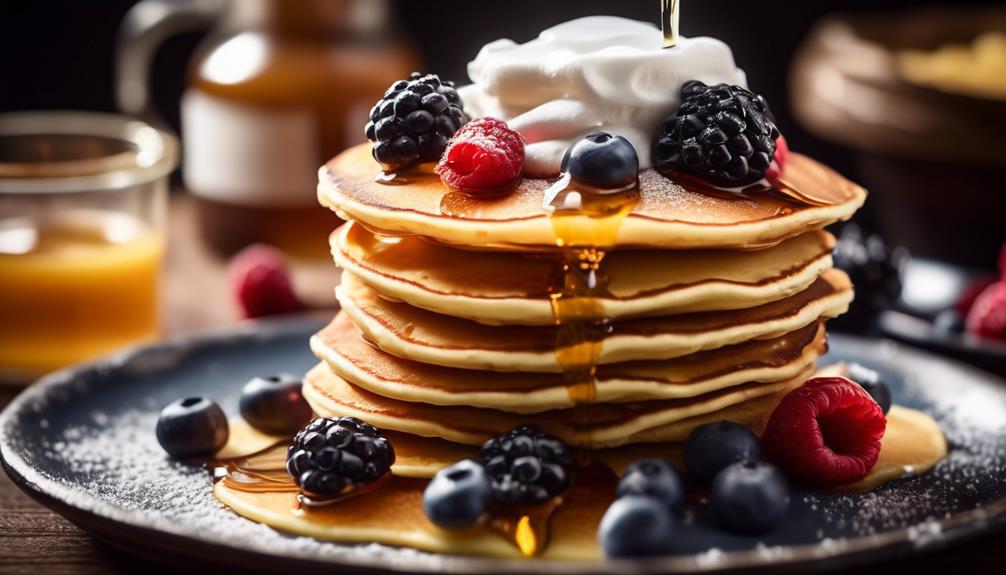
When it comes to making low-carb pancakes, choosing coconut flour is a smart choice for several reasons. Not only is coconut flour gluten-free, but it also offers unique benefits that make it an excellent option for those following a low-carb or ketogenic diet.
One of the main benefits of using coconut flour for gluten-free baking is its high fiber content. Coconut flour is packed with dietary fiber, which helps to promote feelings of fullness and can aid in weight management. Additionally, the fiber in coconut flour can help regulate blood sugar levels, making it a suitable choice for individuals with diabetes or those looking to maintain stable energy levels throughout the day.
Coconut flour also has a low glycemic index, meaning it has a minimal impact on blood sugar levels. This makes it a suitable alternative for individuals who are watching their carbohydrate intake, such as those following a low-carb or ketogenic diet.
While there are alternatives to coconut flour for low-carb pancakes, such as almond flour or flaxseed meal, coconut flour offers unique benefits that set it apart. Its high fiber content, low glycemic index, and gluten-free nature make it an excellent choice for individuals looking to enjoy delicious pancakes while maintaining a low-carb lifestyle.
The Benefits of a Keto-Friendly Breakfast
To fully appreciate the benefits of a keto-friendly breakfast, it's important to understand how incorporating coconut flour into your low-carb pancakes can contribute to a successful ketogenic diet. One of the main advantages of a keto-friendly breakfast is that it helps to kickstart your metabolism and keep you feeling full and satisfied throughout the day. By consuming a meal that's low in carbohydrates and high in healthy fats, such as coconut flour pancakes, you can effectively switch your body into a fat-burning mode known as ketosis.
Coconut flour is an excellent choice for those following a keto diet because it's low in carbs and high in fiber. This means that it has a minimal impact on your blood sugar levels, helping to stabilize your energy levels and prevent those mid-morning cravings. Additionally, coconut flour is rich in medium-chain triglycerides (MCTs), which are easily digested and converted into ketones – the fuel source for your brain and muscles during ketosis.
When cooking coconut flour pancakes, it's important to keep a few tips in mind. First, make sure to use enough liquid in the batter, as coconut flour absorbs a lot of moisture. It's also helpful to let the batter sit for a few minutes before cooking to allow it to thicken. Additionally, cooking the pancakes on a low heat and flipping them gently will ensure that they cook evenly and don't fall apart.
Essential Ingredients for Coconut Flour Pancakes
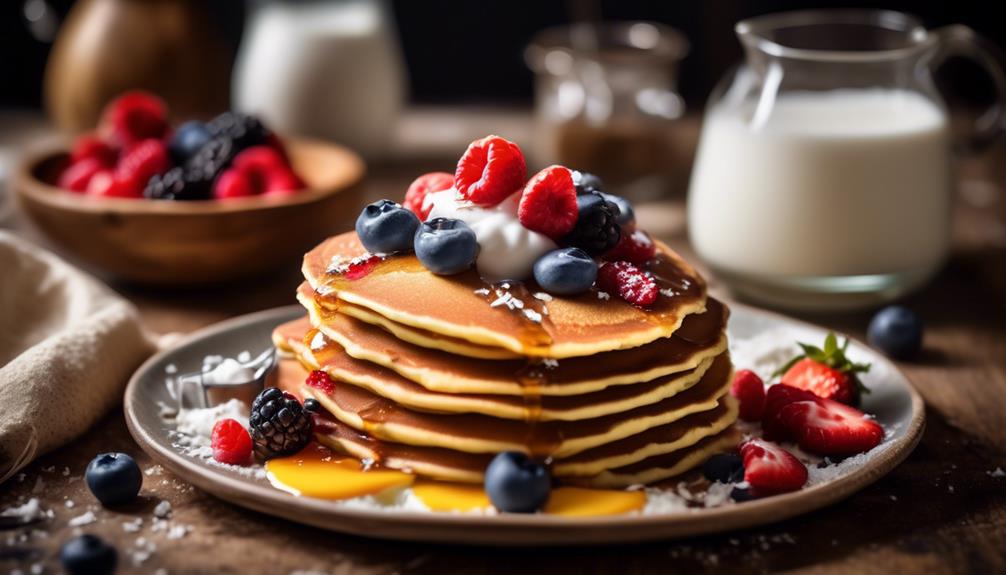
To make delicious and fluffy coconut flour pancakes, you'll need a few essential ingredients that are vital for achieving the perfect texture and flavor.
One of the main benefits of using coconut flour is that it's low in carbohydrates, making it an excellent choice for those following a keto diet. Coconut flour is also high in fiber, which aids in digestion and helps you feel fuller for longer.
In addition to coconut flour, you may also want to consider using alternative low carb flours such as almond flour or flaxseed meal. Almond flour is made from ground almonds and is a great option for those who are allergic to coconut or prefer a milder flavor. Flaxseed meal, on the other hand, is rich in omega-3 fatty acids and adds a nutty taste to your pancakes.
To bind the ingredients together and add moisture to your pancakes, you'll need eggs. Eggs not only provide structure but also contribute to the overall fluffiness of the pancakes. If you prefer a vegan option, you can use flax eggs or chia eggs as substitutes.
Lastly, you'll need a liquid such as almond milk or coconut milk to bring the batter together. These dairy-free options provide a creamy and slightly sweet taste to your pancakes.
Step-by-Step Instructions for Making the Pancake Batter
To make the perfect coconut flour pancake batter, start by mixing the dry ingredients together in a bowl. This typically includes coconut flour, baking powder, and a pinch of salt.
In a separate bowl, whisk together the wet ingredients, such as eggs, coconut milk, and vanilla extract.
Once both mixtures are well-combined, slowly incorporate the wet ingredients into the dry ingredients until a smooth batter forms.
Mixing Dry Ingredients
You can begin making the pancake batter by combining the dry ingredients. Here are three important steps to follow for mixing the dry ingredients effectively:
- Sift the coconut flour: Sifting helps to remove any lumps in the flour and ensures a smooth texture in your pancakes. Use a fine-mesh sieve to sift the coconut flour into a mixing bowl.
- Add the leavening agents: To achieve fluffy pancakes, it's crucial to incorporate leavening agents like baking powder and salt. Measure out the required amounts and gently whisk them into the coconut flour.
- Blend in alternative flours: If you're using alternative flours like almond flour or flaxseed meal, this is the time to add them to the mix. These flours provide additional nutrients and flavor to your pancakes. Gradually incorporate them into the coconut flour mixture, whisking until well combined.
Combining Wet Ingredients
After effectively mixing the dry ingredients for your coconut flour pancakes, it's time to move on to combining the wet ingredients to create the perfect pancake batter. This step is crucial for achieving the right texture and flavor in your pancakes. When it comes to mixing techniques, it's important to be gentle and avoid overmixing the batter. Overmixing can lead to tough and dense pancakes.
To combine the wet ingredients, start by whisking together the eggs and coconut milk in a separate bowl. This helps ensure that the eggs are evenly distributed throughout the batter. Next, add in any additional wet ingredients, such as melted butter or oil, and mix until well incorporated.
When using alternative flours like coconut flour, it's important to note that they absorb more liquid than traditional flours. This means that you may need to adjust the amount of liquid in the recipe to achieve the right consistency. If the batter seems too thick, you can add a little more coconut milk or water to thin it out.
Incorporating the Batter
Once you have successfully combined the wet ingredients for your coconut flour pancakes, it's time to move on to the next step of incorporating the batter. Here are three important things to keep in mind during this process:
- Gently fold in mix-ins: If you want to add some extra flavor or texture to your pancakes, now is the time to do so. Whether it's fresh blueberries, chocolate chips, or chopped nuts, gently fold them into the batter using a spatula. Be careful not to overmix, as this can lead to dense pancakes.
- Use alternative cooking methods: While traditional stovetop cooking works just fine, you may want to consider alternative methods for cooking your coconut flour pancakes. One option is to use a griddle or a pancake maker, which can ensure even cooking and consistent results. Another option is to bake the batter in a preheated oven, which can be a time-saver when making a large batch of pancakes.
- Adjust the batter consistency: Coconut flour tends to absorb more liquid than regular flour, so you may need to adjust the batter consistency. If the batter seems too thick, you can add a little more liquid (such as almond milk or water) to thin it out. On the other hand, if the batter is too thin, you can add a small amount of coconut flour to thicken it up.
Perfecting the Flip: Tips for Cooking Coconut Flour Pancakes
Now that you have mastered the art of making the perfect coconut flour pancake batter, it's time to focus on the cooking process.
To achieve the perfect flip, make sure to use a spatula that's thin and flexible.
Additionally, be patient and wait for the edges of the pancake to become golden brown before attempting to flip it.
Flipping Techniques
To achieve perfectly cooked coconut flour pancakes, employ these practical flipping techniques:
- Use a non-stick pan: A non-stick pan is essential for easily flipping pancakes without them sticking to the surface. Make sure to heat the pan on medium-low heat before adding the batter.
- Wait for bubbles to form: Cook the pancakes on one side until bubbles start to form on the surface. This indicates that the pancake is ready to be flipped. If you flip too early, the pancake may break apart.
- Use a spatula: Gently slide a spatula under the pancake and lift it up. Hold it steady and flip it over in one quick motion. Be careful not to press down too hard, as this can cause the pancake to lose its fluffiness.
Cooking Time Tips
For perfectly cooked coconut flour pancakes, it's important to pay attention to the cooking time and follow these tips for achieving the perfect flip. Cooking techniques play a crucial role in ensuring that your pancakes turn out fluffy and golden brown.
First, make sure your pancake batter is well-mixed and smooth, with no lumps. When cooking the pancakes, use medium-low heat to prevent burning and allow for even cooking. It's essential to wait until you see bubbles forming on the surface before flipping the pancakes. This indicates that they're ready to be turned over.
Gently slide a spatula underneath and flip them in one quick motion. Cook for another minute or two on the other side. Finally, when it comes to pancake toppings, the options are endless. Consider adding fresh berries, sliced bananas, or a dollop of whipped cream for a delicious and satisfying breakfast.
Achieving Even Browning
Achieving even browning is key to perfecting the flip when cooking coconut flour pancakes. It can be achieved by following these helpful tips:
- Adjust the heat: To ensure even browning, start by preheating your pan over medium-low heat. This will allow the pancake to cook slowly and evenly, preventing any burnt spots.
- Use a non-stick pan or griddle: A non-stick surface is essential for achieving even browning. It helps the pancake cook evenly and prevents it from sticking to the pan, making flipping easier.
- Flip with confidence: When it's time to flip, use a thin spatula to gently lift the pancake from the pan. Flip the pancake quickly and confidently to avoid any breakage. It's important to wait until the edges are set and bubbles have formed on the surface before attempting the flip.
Tantalizing Toppings for Your Low-Carb Pancakes
Enhance the flavor of your low-carb pancakes with tantalizing toppings that will take your keto breakfast to the next level. While traditional pancakes are often loaded with sugary syrups and toppings, there are plenty of delicious and low-carb options that can add a burst of flavor without compromising your dietary goals.
One popular topping idea for low-carb pancakes is fresh berries. Berries like strawberries, blueberries, and raspberries aren't only low in carbs but also packed with antioxidants and vitamins. They add a natural sweetness and a pop of color to your pancakes.
Another tasty option is to top your pancakes with a dollop of whipped cream. You can use full-fat whipped cream or even make your own using heavy cream and a low-carb sweetener. This creamy addition adds a rich and indulgent flavor to your pancakes.
For a nutty twist, try sprinkling some chopped nuts on top of your pancakes. Options like almonds, pecans, or walnuts not only provide a satisfying crunch but also add healthy fats and a boost of protein.
If you're craving something decadent, consider adding a drizzle of sugar-free chocolate sauce or caramel sauce. These low-carb options can satisfy your sweet tooth without derailing your ketogenic diet.
Experiment with different flavor combinations and have fun creating your own signature toppings for your low-carb pancakes. The possibilities are endless, and with a little creativity, you can enjoy delicious and guilt-free pancakes every morning.
How to Store and Reheat Coconut Flour Pancakes
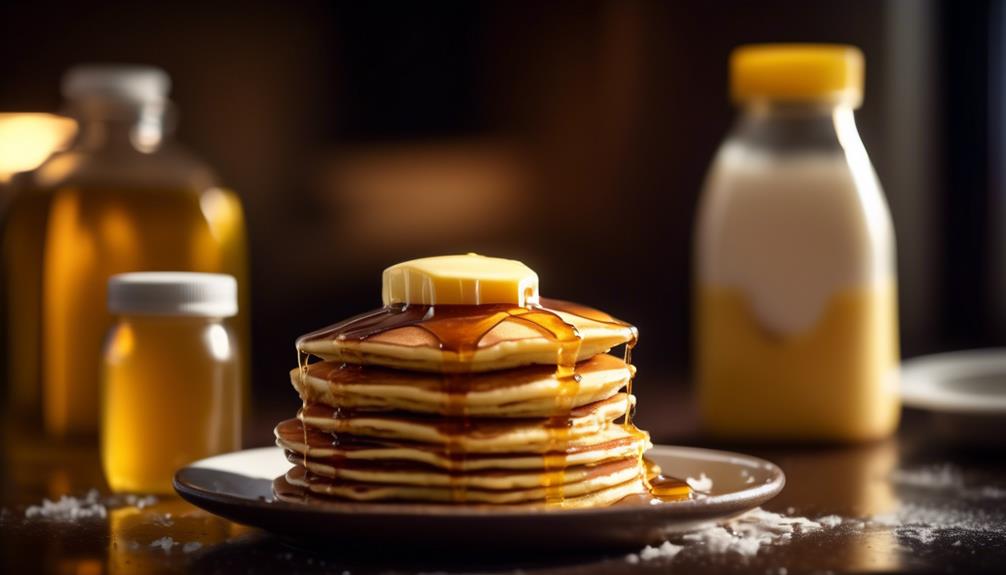
To ensure that your coconut flour pancakes stay fresh and delicious, it's important to know how to store and reheat them properly. Follow these tips to keep your pancakes tasting just as good as when you first made them:
- Storing pancakes: After making your coconut flour pancakes, allow them to cool completely. Once cooled, stack the pancakes with a piece of parchment paper in between each one to prevent them from sticking together. Place the stack of pancakes in an airtight container or a resealable plastic bag. Store them in the refrigerator for up to 3 days. For longer storage, you can also freeze the pancakes. Simply place them in a freezer-safe bag and store them in the freezer for up to 2 months.
- Reheating leftovers: When you're ready to enjoy your leftover pancakes, there are a few ways to reheat them. One option is to microwave them for about 30 seconds to 1 minute, or until they're heated through. Another option is to heat them in a skillet over medium heat for a couple of minutes on each side. This will help to crisp them up and bring back their fresh-from-the-pan taste. Whichever method you choose, be sure to keep an eye on them to prevent them from burning.
Creative Variations to Try With Coconut Flour Pancakes
There are many creative variations you can try with coconut flour pancakes to add delicious flavors and textures to your breakfast. Coconut flour pancake recipes are versatile and allow for experimentation with different ingredients and toppings. Here are some unique pancake toppings that you can try to elevate your coconut flour pancakes:
- Fresh Berries: Top your pancakes with a mixture of fresh strawberries, blueberries, and raspberries. The tartness of the berries pairs perfectly with the sweet and nutty flavor of coconut flour.
- Nut Butter and Banana: Spread a generous amount of almond butter or peanut butter on top of your pancakes and add sliced bananas for a creamy and satisfying combination.
- Coconut Whipped Cream: Whip up some coconut cream with a touch of sweetener and vanilla extract. Dollop it on top of your pancakes for a light and fluffy topping.
- Lemon and Honey: Squeeze fresh lemon juice over your pancakes and drizzle with a bit of honey for a tangy and sweet twist.
- Dark Chocolate and Sea Salt: Sprinkle some chopped dark chocolate and a pinch of sea salt on top of your pancakes for a decadent and indulgent treat.
These creative variations won't only add excitement to your breakfast routine but also provide you with a wide range of flavors to enjoy with your coconut flour pancakes. Experiment with different combinations to find your own favorite topping!
Frequently Asked Questions About Coconut Flour Pancakes on a Keto Diet
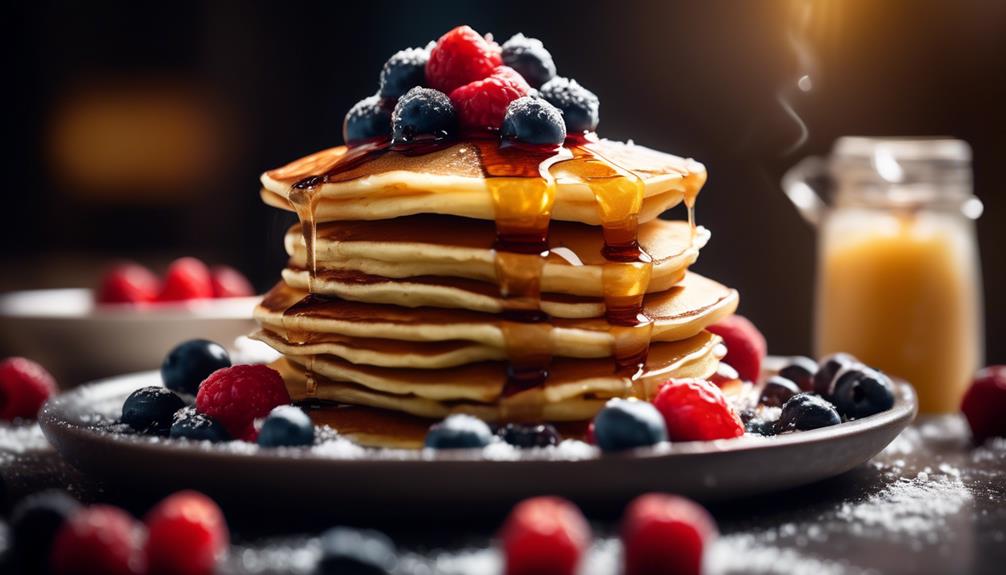
If you're following a keto diet and have questions about incorporating coconut flour pancakes, here are some frequently asked questions to help guide you:
- Can I use keto-friendly sweeteners in my coconut flour pancakes?
Yes, you can! There are several keto-friendly sweeteners available such as stevia, erythritol, and monk fruit sweetener. These sweeteners are low in carbs and won't spike your blood sugar levels. You can use them in your pancake batter or as a topping for added sweetness.
- How can I troubleshoot common pancake issues when using coconut flour?
Coconut flour can be a bit tricky to work with, but with a few tips, you can avoid common issues. One common problem is that coconut flour pancakes can turn out dry and crumbly. To combat this, you can add extra liquid to the batter, such as almond milk or coconut milk, to keep the pancakes moist. Another issue is that the pancakes may be too dense. To lighten them up, you can add a bit of baking powder to the batter for some extra lift.
- Can I freeze coconut flour pancakes?
Absolutely! Coconut flour pancakes freeze well and can be a convenient option for busy mornings. Once you've cooked your pancakes, let them cool completely before placing them in a single layer in a freezer-safe bag or container. When you're ready to enjoy them, simply reheat them in the toaster or microwave.
Conclusion
In conclusion, these easy low-carb coconut flour pancakes are a delicious and keto-friendly option for breakfast. By using coconut flour, you can enjoy all the benefits of a low-carb diet while still satisfying your pancake cravings.
With the right ingredients and simple instructions, you can easily make these pancakes and customize them with your favorite toppings. Plus, they can be stored and reheated for later enjoyment.
Get creative and try different variations to keep your breakfasts exciting and enjoyable.

